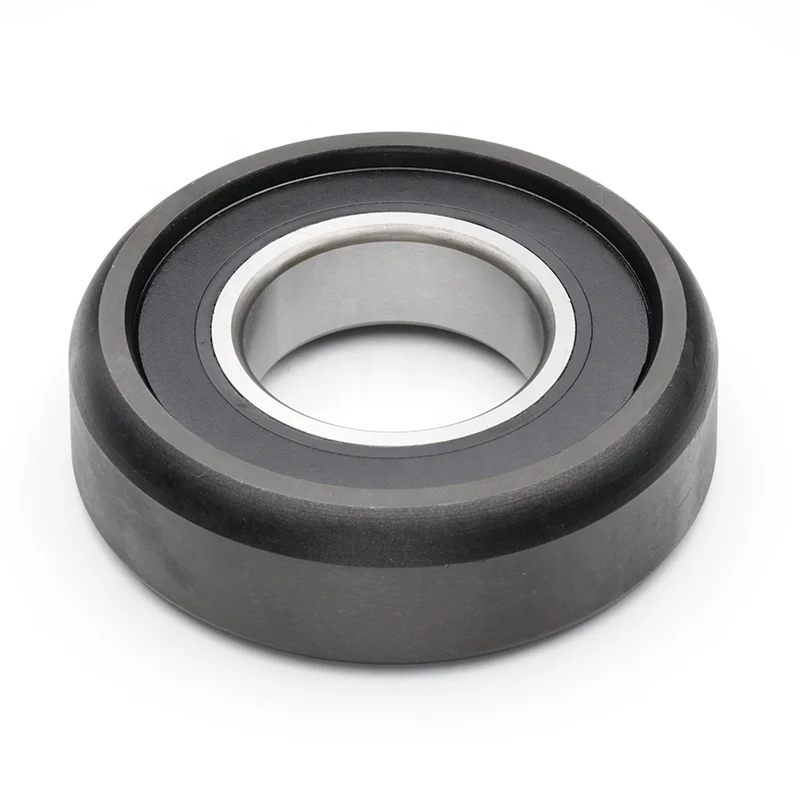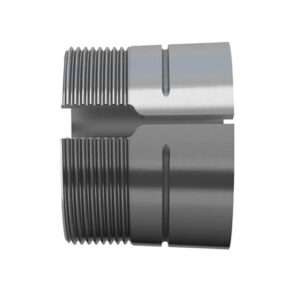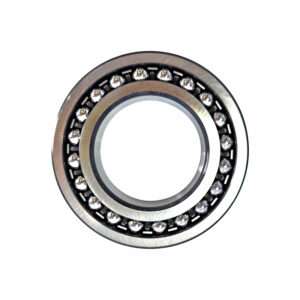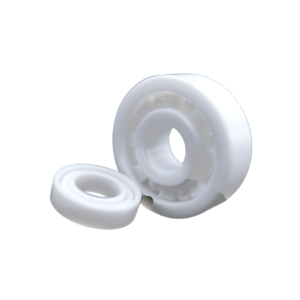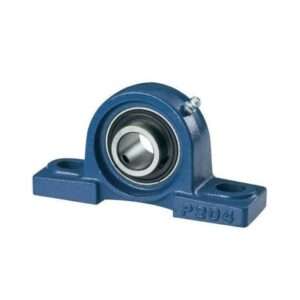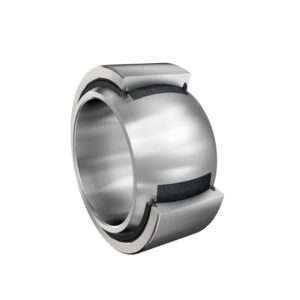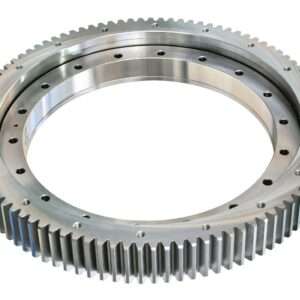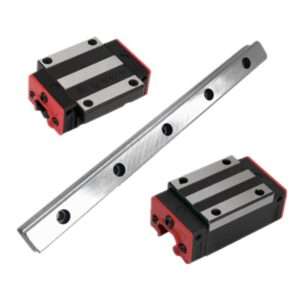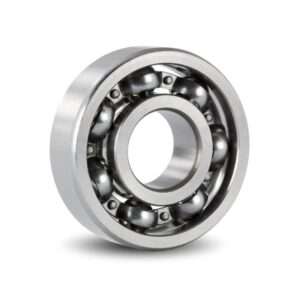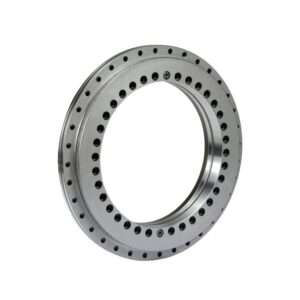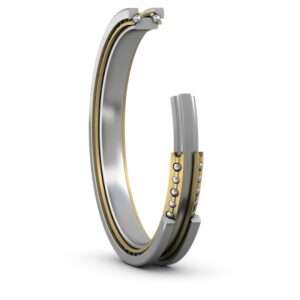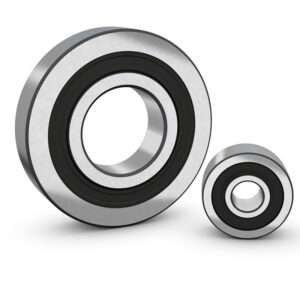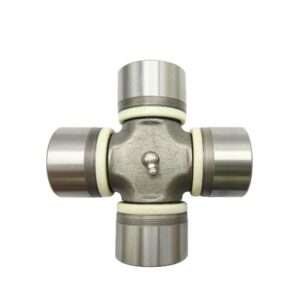Table of Contents
Categories
Innovative Bearings: Powering the Future of Electric Vehicles

Introduction
Importance of Bearings in EVs
Bearings play a pivotal role in the smooth functioning of electric vehicles (EVs), supporting various components such as motors, gearboxes, and wheels. Their ability to reduce friction and support heavy loads directly impacts the efficiency and performance of EVs. Moreover, with the emphasis on enhancing range and reducing energy consumption, the role of bearings becomes even more critical. From ensuring smooth operation to mitigating wear and tear, bearings are integral to the reliability and longevity of EVs, making advancements in bearing technology essential for the advancement of electric mobility.
Overview of Traditional Bearing Systems
Traditional bearing systems in electric vehicles (EVs) encompass a variety of designs, predominantly consisting of ball bearings, roller bearings, and thrust bearings. Ball bearings, with their low friction and versatility, are commonly found in EV components like motor shafts and wheel hubs. Roller bearings, known for their ability to handle heavy radial loads, are often employed in gearbox assemblies to withstand the torque demands of EV drivetrains. Thrust bearings, crucial for supporting axial loads, are utilized in applications such as motor mounts and suspension systems. Despite their effectiveness, traditional bearing systems face challenges in meeting the demanding requirements of EVs, driving the need for continual innovation and advancement in bearing technology.
Types of Bearings Used in Electric Vehicles
Ball Bearings: They are renowned for their versatility, offering low friction and high-speed capabilities. Ball bearings are commonly found in electric vehicles, serving in critical components such as motor shafts and wheel hubs. Their smooth operation contributes to the overall efficiency and performance of electric drivetrains.
Roller Bearings: These bearings are well-suited for applications requiring the support of heavy radial loads, such as gearbox assemblies within electric drivetrains. Due to their design, roller bearings offer high load-carrying capacity and are resistant to impact and shock, making them essential for ensuring the durability and reliability of electric vehicle components.
Thrust Bearings: Thrust bearings are engineered to support axial loads, providing stability and support under varying driving conditions. They can withstand both high speeds and heavy loads, making them crucial components in electric vehicles. Thrust bearings are commonly used in applications like motor mounts and suspension systems, where they ensure smooth operation and reliable performance by effectively managing axial forces generated during vehicle operation.
Challenges Faced by Bearings in Electric Vehicles
Electric vehicles (EVs) present several challenges for bearings, including coping with high RPM requirements, heavy loads and torque, and temperature extremes. Firstly, the high RPM demands of electric drivetrains pose a significant challenge for bearings. Electric motors often operate at higher speeds than traditional internal combustion engines, placing considerable stress on bearings. This stress can lead to issues such as increased friction, heat generation, and potential for premature wear. Bearings must be designed to withstand these rapid rotations while maintaining optimal performance and durability.
Secondly, bearings in EVs must contend with heavy loads and torque generated by electric drivetrains. Electric motors produce instant torque, which places substantial strain on bearings, particularly in components like gearbox assemblies. Additionally, the weight of EVs, which is often distributed unevenly due to battery placement, further increases the load-bearing requirements for bearings. Bearings must be robust enough to support these heavy loads and torque while minimizing wear and maintaining smooth operation.
Furthermore, temperature extremes present another challenge for bearings in electric vehicles. The operation of electric drivetrains generates heat, leading to elevated temperatures within bearing assemblies. Conversely, during cold weather conditions, bearings may experience lower temperatures, which can affect lubrication properties and increase the risk of damage due to thermal expansion and contraction. To address these temperature extremes, bearings in EVs require effective cooling and lubrication systems, as well as materials capable of withstanding a wide range of temperatures without compromising performance or longevity.
Innovations in Bearing Materials
Innovations in bearing materials have paved the way for enhanced performance and durability in electric vehicles (EVs), with ceramic bearings, polymer bearings, and composite bearings emerging as promising solutions. Ceramic bearings, often made from materials like silicon nitride or zirconia, offer several advantages over traditional steel bearings. Their exceptional hardness, corrosion resistance, and high-temperature capabilities make them well-suited for the demanding conditions of electric drivetrains. Ceramic bearings exhibit reduced friction, resulting in improved efficiency and longevity, while their lightweight nature contributes to overall vehicle weight reduction and energy savings.
Polymer bearings represent another innovative solution for EV applications, utilizing materials such as polytetrafluoroethylene (PTFE) or thermoplastics like nylon. Polymer bearings offer excellent resistance to corrosion, chemicals, and moisture, making them ideal for use in electric drivetrains where exposure to harsh operating environments is common. Additionally, polymer bearings are self-lubricating, reducing the need for external lubrication and maintenance, while their low coefficient of friction ensures smooth operation and minimized wear.
Composite bearings combine the best properties of multiple materials, offering a unique balance of strength, durability, and lightweight design. These bearings typically consist of a matrix material reinforced with fibers such as carbon or glass. Composite bearings exhibit high load-carrying capacity, excellent resistance to wear and fatigue, and reduced friction compared to traditional steel bearings. Their versatility makes them suitable for various applications within electric vehicles, from supporting motor shafts to enhancing the performance of suspension systems.
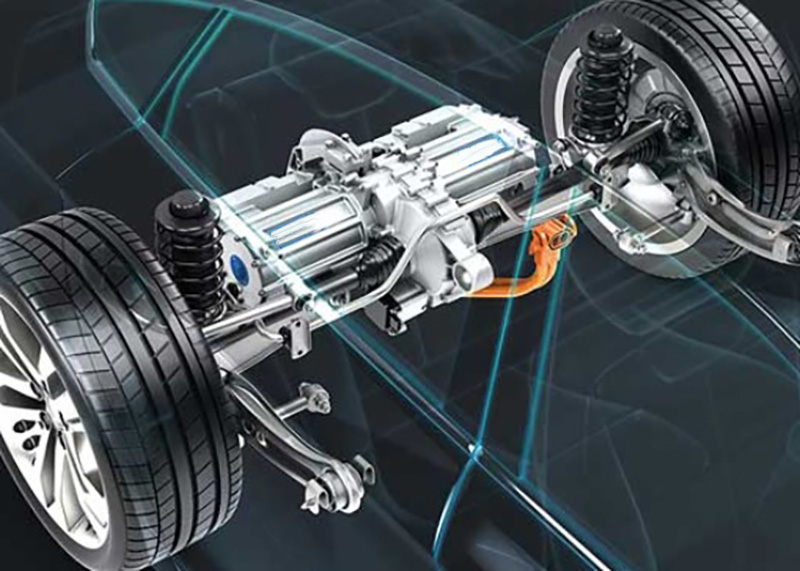
Advanced Lubrication Technologies
Solid Lubricants
Advanced lubrication technologies, such as solid lubricants, have revolutionized the performance and longevity of bearings in electric vehicles (EVs). Solid lubricants, including materials like graphite, molybdenum disulfide, and PTFE (polytetrafluoroethylene), offer several advantages over traditional liquid lubricants. These solid lubricants adhere to bearing surfaces, forming a protective layer that reduces friction and wear, even under extreme operating conditions. In EV applications, where high RPM, heavy loads, and temperature extremes are common, solid lubricants provide enhanced durability and reliability. Additionally, solid lubricants eliminate the risk of leakage or evaporation associated with liquid lubricants, minimizing maintenance requirements and ensuring consistent performance over the lifespan of the bearings.
Magnetic Fluid Bearings
Advanced lubrication technologies, such as magnetic fluid bearings, have emerged as cutting-edge solutions for enhancing the performance and reliability of bearings in electric vehicles (EVs). Magnetic fluid bearings utilize a specialized lubricant containing suspended magnetic nanoparticles. When exposed to a magnetic field, these nanoparticles form a stable lubricating layer between the bearing surfaces, effectively reducing friction and wear. This innovative technology offers several benefits for EV applications, including minimal frictional losses, improved efficiency, and extended lifespan of the bearings. Moreover, magnetic fluid bearings are capable of operating in a wide range of temperatures and environmental conditions, making them well-suited for the demanding requirements of electric drivetrains. By harnessing the principles of magnetism, magnetic fluid bearings contribute to the advancement of electric mobility by optimizing performance and ensuring the durability of critical components within EVs.
Self-Lubricating Bearings
Self-lubricating bearings represent a significant advancement in lubrication technology for electric vehicles (EVs), offering enhanced performance and longevity without the need for external lubrication systems. These bearings incorporate solid lubricant materials, such as PTFE (polytetrafluoroethylene) or graphite, into their structure, ensuring continuous lubrication of the bearing surfaces during operation. The self-lubricating properties of these materials reduce friction and wear, resulting in improved efficiency and reliability of EV components. Additionally, self-lubricating bearings minimize maintenance requirements and eliminate the risk of lubricant contamination, making them ideal for use in electric drivetrains where reliability and longevity are paramount. By providing a hassle-free lubrication solution, self-lubricating bearings contribute to the overall performance and sustainability of electric vehicles.
Bearing Designs for Efficiency Improvement
Reduced Friction Designs
Bearing designs aimed at improving efficiency often prioritize reducing friction, a key factor in optimizing the performance of electric vehicles (EVs). These reduced friction designs incorporate innovative features such as precision machining, smoother surface finishes, and advanced materials to minimize contact resistance between bearing components. By reducing frictional losses, these bearings enhance the overall efficiency of EV drivetrains, resulting in improved energy utilization and extended range. Additionally, reduced friction designs contribute to lower operating temperatures and reduced wear on bearing components, further enhancing their longevity and reliability. Overall, these advancements in bearing design play a crucial role in maximizing the efficiency and sustainability of electric vehicles, ultimately driving forward the adoption of cleaner and more efficient transportation solutions.
Integrated Sensor Bearings
Integrated sensor bearings represent a notable advancement in bearing design aimed at improving efficiency and performance in electric vehicles (EVs). These bearings incorporate built-in sensors to monitor various parameters such as temperature, vibration, and load distribution in real-time. By providing valuable data on the operating conditions of the bearing assembly, integrated sensor bearings enable proactive maintenance strategies, such as predictive maintenance and condition monitoring, to detect potential issues before they escalate. This proactive approach helps prevent costly downtime and enhances the reliability and longevity of EV drivetrains. Additionally, integrated sensor bearings contribute to improved efficiency by optimizing the performance of critical components and enabling data-driven decision-making for enhanced vehicle performance and safety.

Hybrid Bearing Systems
Hybrid bearing systems represent a significant innovation in bearing design, aimed at improving efficiency in electric vehicles (EVs). These systems combine the advantages of different bearing types, such as ball bearings and roller bearings, to optimize performance and reduce friction. By strategically integrating different bearing elements within the same assembly, hybrid bearing systems can effectively distribute loads and minimize frictional losses, resulting in improved efficiency and extended lifespan of EV drivetrain components. Additionally, hybrid bearing systems may incorporate advanced materials and lubrication technologies to further enhance their performance and reliability.
Role of Bearings in Electric Vehicle Performance
Bearings play a pivotal role in shaping the performance of electric vehicles (EVs) across multiple dimensions. Firstly, their impact on range and efficiency is significant. Efficient bearings reduce frictional losses within the drivetrain, optimizing power delivery from the battery to the wheels. This translates to improved energy utilization and extended range per charge, crucial factors in enhancing the practicality and attractiveness of EVs.
Secondly, bearings influence noise and vibration levels in EVs. Smoothly operating bearings minimize vibration and mechanical noise, contributing to a quieter and more comfortable driving experience for passengers. Additionally, reduced noise levels enhance overall vehicle refinement, aligning with the expectations of discerning modern consumers.
Thirdly, bearings are integral to the reliability of EVs. Reliable bearings ensure the smooth and consistent operation of critical components such as motors and gearboxes, minimizing the risk of unexpected failures or downtime. This reliability is essential for instilling confidence in EVs among consumers and fostering broader adoption of electric mobility. In summary, bearings exert a multifaceted influence on the performance, comfort, and reliability of electric vehicles, underscoring their importance in advancing the sustainability and viability of electric transportation.
Conclusion
In conclusion, bearings are indispensable components in the realm of electric vehicles (EVs), playing a pivotal role in ensuring efficiency, reliability, and performance. Traditional bearing systems face formidable challenges posed by the demanding requirements of EVs, necessitating continual innovation. Advances in materials, lubrication technologies, and bearing designs have addressed these challenges, offering solutions that enhance efficiency, durability, and sustainability. From reducing friction to enabling proactive maintenance through integrated sensors, bearings contribute significantly to the evolution and widespread adoption of electric mobility. As EVs continue to reshape the automotive landscape, the critical role of bearings in powering this transformation cannot be overstated, heralding a future of cleaner, quieter, and more reliable transportation.
References
- 1.”The Tribology of Electric Vehicles” from Bearing NEWs;
- 2. “Electric Vehicle Solutions” from NBC Bearings;
- 3. “Hybrid bearings -EV” from SKF Bearings.
Related Posts
sensor bearings
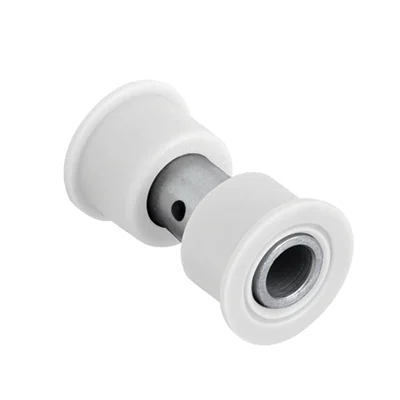
Delrin Bearings: Lubrication-Free Long Life

Locomotive Bearing Specs That Matter Most
